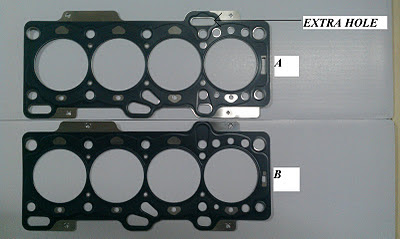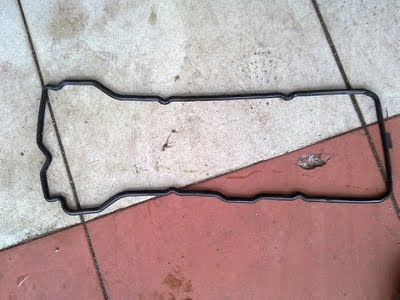
Use to be dealing with VQ25DE, VQ30DE and VQ35DE engine gasket, seldom deal with the VQ25HR and VQ35HR engine gasket, again, just upload some fact on this engine from wikipedia for sharing.
VQ25HR
The 2.5 L VQ25HR (for "High Revolution" or "High Response") is only offered on longitudinally-mounted engine vehicles which tend to be rear wheel drive or all-wheel drive. Bore and stroke are 85 mm and 73.3 mm, with a compression ratio of 10.3:1. It produces 235 PS (173 kW; 232 hp) @6,800 rpm and 194 ft·lbf (263 N·m) @4,800 rpm. It has dual CVTC for both intake and exhaust, microfinished camshafts and a redline of 7,500 rpm.
It is fitted to the following vehicles:
2006–present Nissan Skyline V36 250GT Sedan - 235 PS (173 kW; 232 hp)
2007–present Nissan Fuga 250GT - 223 PS (164 kW; 220 hp)
2011–present Infiniti G V36 G25 Sedan - 218 hp (163 kW)
2010–present Infiniti EX J50 EX25 Crossover SUV - 235 PS (173 kW; 232 hp)
VQ35HR
VQ35HRThe VQ35HR update was first seen in the US in the 2007 G35 Sedan models, which debuted in August 2006. Nissan updated the VQ line with the addition of the 3.5 L VQ35HR (for "High Revolution" or "High Response"). It produces 315 PS (232 kW; 311 hp) (US market: 306HP due to new US federal measurement regulations) at 6,800 rpm and 37 kg·m (363 N·m; 268 ft·lbf) at 4,800 rpm, using a compression ratio of 10.6:1. As of 2009, the Infiniti EX35 produces 297 hp and the same torque presumably due to tighter regulations. It has NDIS (Nissan Direct Ignition System) and CVTC with hydraulic actuation on the intake cam and electromagnetic on the exhaust cam. Redline is 7,500 rpm. Reportedly over 80% of the internal components were redesigned or strengthened to handle an increased RPM range sporting a lofty 7,500 rpm redline. A new dual-path intake (two air cleaners, throttle bodies, etc.) lowers intake tract restriction by 18 percent and new equal-length exhaust manifolds lead into mufflers that are 25 percent more free-flowing for all around better airflow. The new intake is said to benefit from a ram-air effect adding three horsepower at 60 mph (not accounted for by SAE testing methods). The electrically actuated variable valve timing on the exhaust cams to broaden the torque curve is new over the "DE" engine. The new engine block retains the same bore and stroke, but the connecting rods were lengthened and the block deck was raised by 8.4 mm to reduce piston side-loads. This modification, along with the use of larger crank bearings with main bearing caps reinforced by a rigid ladder-type main cap girdle to allow the engine reliably rev to 7500 rpm. With an increase in compression ratio from 10.3:1 to 10.6:1 these changes add 6 more horsepower (306 total + 3 hp ram air effect not measured by SAE testing = 309 hp). Peak torque is up 8 pound-feet from the old "DE" engine (260 vs. 268) and the torque curve is higher and flatter across most of the rpm range, and especially in the lower rpm range.
The VQ35HR fitted to the following vehicles:
2007–2008 Infiniti G35 Sedan
2007–2008 Nissan Skyline V36 350GT Sedan
2007–2009 Nissan 350Z
2006–2009 Nissan Fuga 350 GT
2008–present Infiniti EX35 Crossover SUV
2009–present Infiniti FX35 Crossover SUV
2009–2010 Infiniti M35
2011–present Infiniti M35h (hybrid variant)
2010–present Nissan Fuga Hybrid

















































